The Farm at U.C Santa Cruz Today
While visiting U.C. Santa Cruz in July of 2012, we stopped for a while at the farm project, now operated under the Agroecology Program, to see how the work there was progressing. As you enter the farm from the access path that runs up the hill from the Carriage House parking area, the first thing you see is the classroom building that was erected on the site of the stone cookhouse that Stephen Decater built in the first year of the farm's existence, while it was still under the direction of Alan Chadwick. The new building carries forward the architectural motif that Stephen established, as his cookhouse had a stone wall about three feet high, supporting a canvas tent structure that kept out the rain. Nowadays, the canvas is gone; sturdy wooden walls over a stone foundation now provide protection from the weather.
On the day we visited, this classroom was being used to provide instruction in entomology to the twenty or thirty apprentices that had paid to work on the farm for that season. We stood at the door, peering in and listening to an expert explain the characteristics of some insect pest, when one apprentice asked if the bug in question was found in the Santa Cruz area. The instructor replied honestly that she didn't know. A look of frustration came over the young man, but no more was said.
Alan Chadwick used to say that the only fair apprentice relationship was where the person was neither paid for his work nor did he pay for the instruction. The one was a fair trade for the other. Apparently that model doesn't work anymore. We tried to engage one or two of the young men and women in conversation about their experiences working at the UCSC farm, but they seemed to be busy and occupied amongst themselves, without much interest in conversation with doddering ex-Chadwick apprentices from the middle of the last century. We proceeded to console ourselves with delicious fruit snitched from the blackberry vines, plum trees, peaches, and apples, when nobody was looking. The blackberries were quite good . . . see photo below.
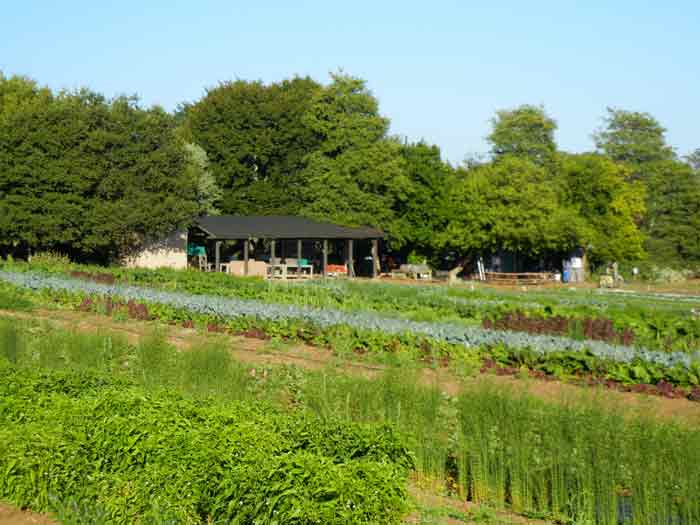
An outdoor classroom area at the edge of the vegetable fields at the UCSC farm.
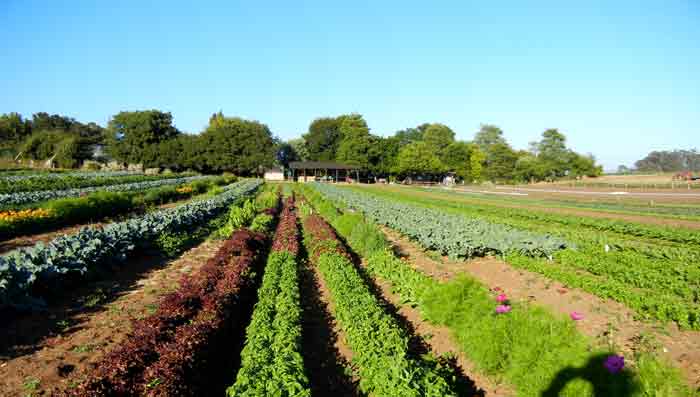
The beds stretch to infinity, almost, which is possible because cultivation is done by machine here at the Agroecology Program at UCSC. The emphasis of the program is food production, but without the use of chemical fertilizers and sprays.
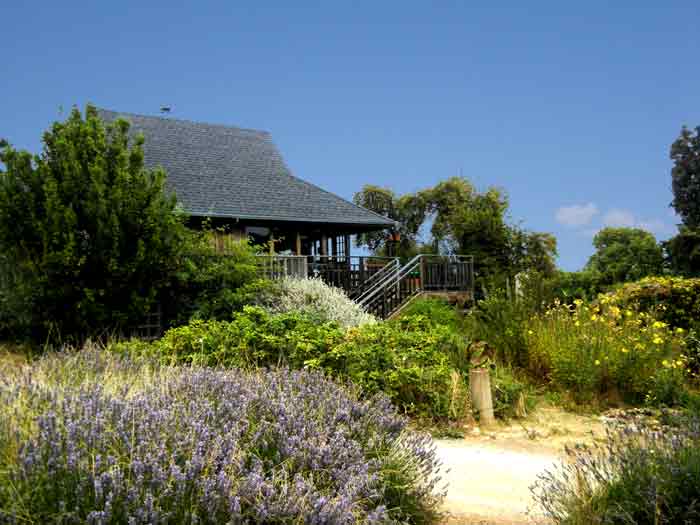
This is the building that houses the kitchen and dining hall for the apprentice workers on the farm. When we asked the cook for permission to photograph the kitchen area, he told us, "no!"
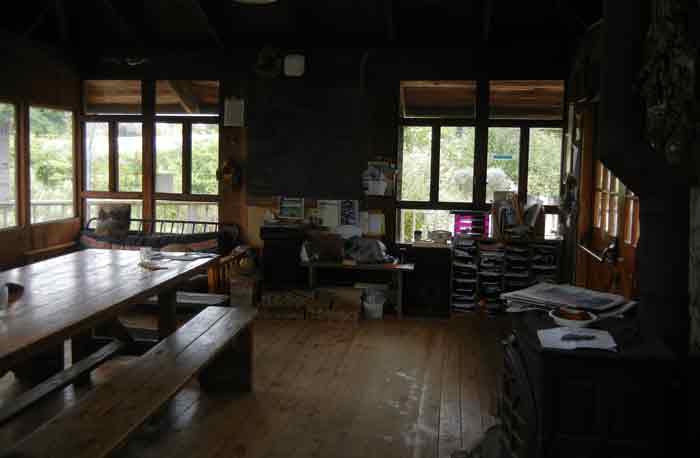
Not to take "no" for an answer, we proceeded to capture at least the interior dining area on film so that readers of alan-chadwick.org could get an impression of the life of an apprentice at UCSC today. Compared to the conditions at the old garden chalet back in the early 1970's, it seemed to be quite comfortable and cozy, at least on a physical level.
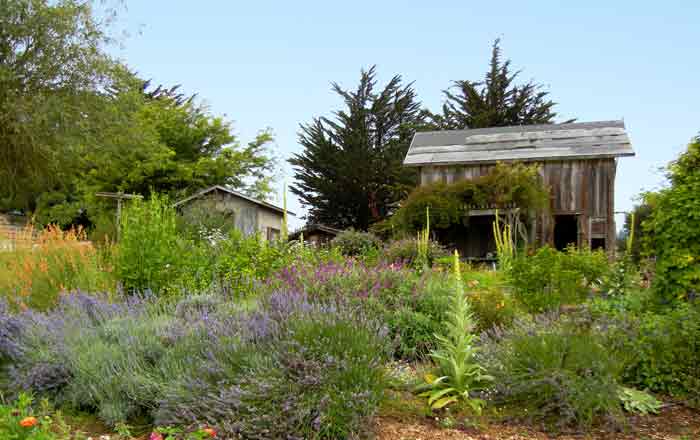
Alan Chadwick used to call the small building on the right, "the abattoirs," which is French for "slaughterhouse." The machinery for hoisting the carcasses of slain cattle is still intact within the building, though now it seems to be used only for storage. A nice little herb garden adorns the slope in the foreground.
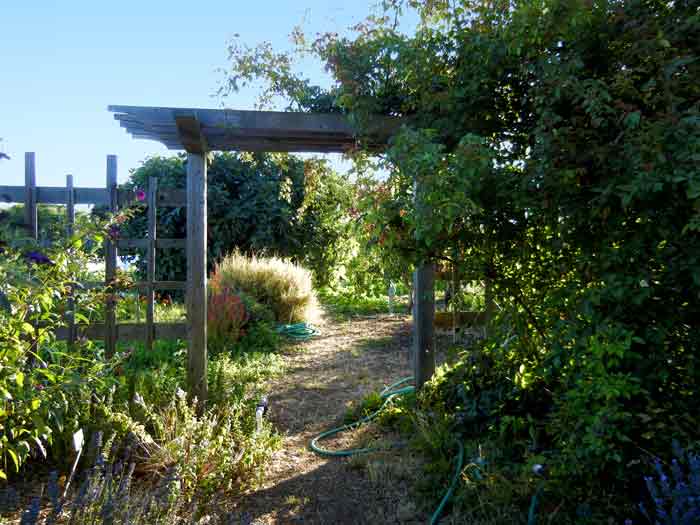
An oriental-style arbor graces the passageway from one area to another here on the UCSC Agroecology Program farm.
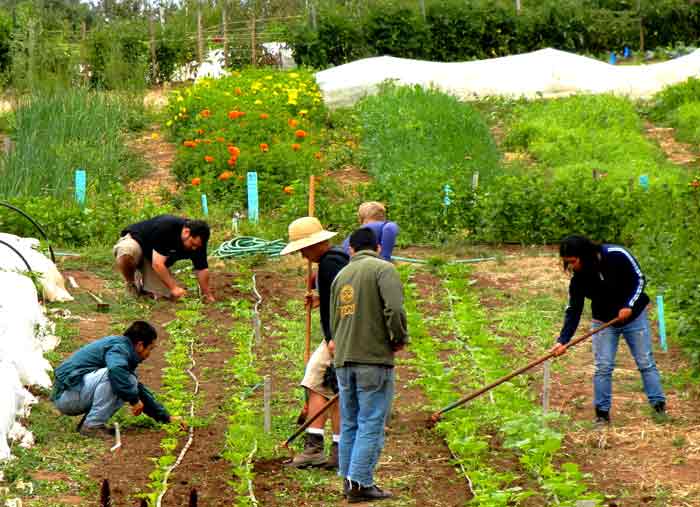
When asked if they were farm apprentices, this group of workers said that they were volunteers from another garden project, just visiting for the day. These were the friendliest of the persons we encountered there, unless you count the "at-risk" youth who were paid to help out on the farm as a kind of summer program. Those guys (and girls) were really happy.
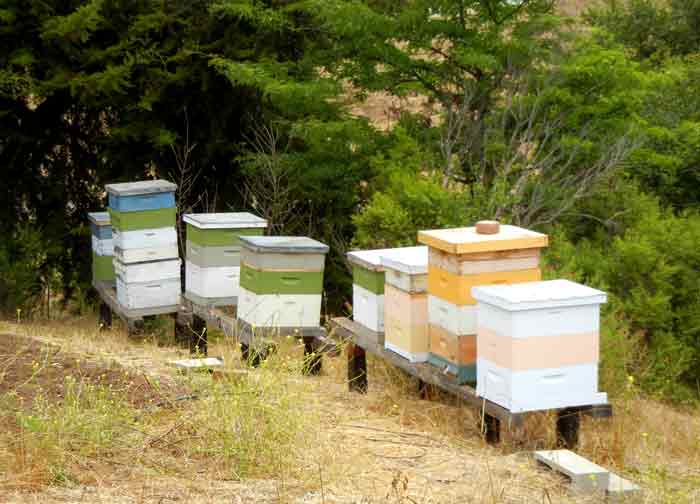
Bee hives provide honey for the apprentices and pollination for the fruit trees at UCSC.
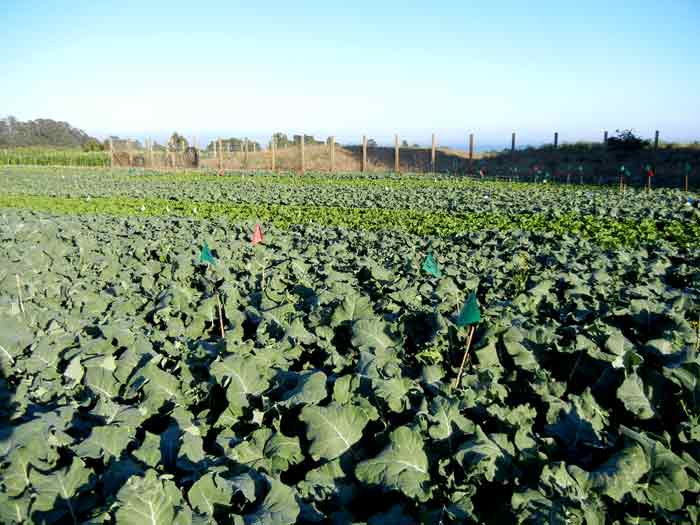
Companion-planting on an industrial scale! Fields of broccoli alternate with large swaths of lettuce, with Monterey Bay in the distance.
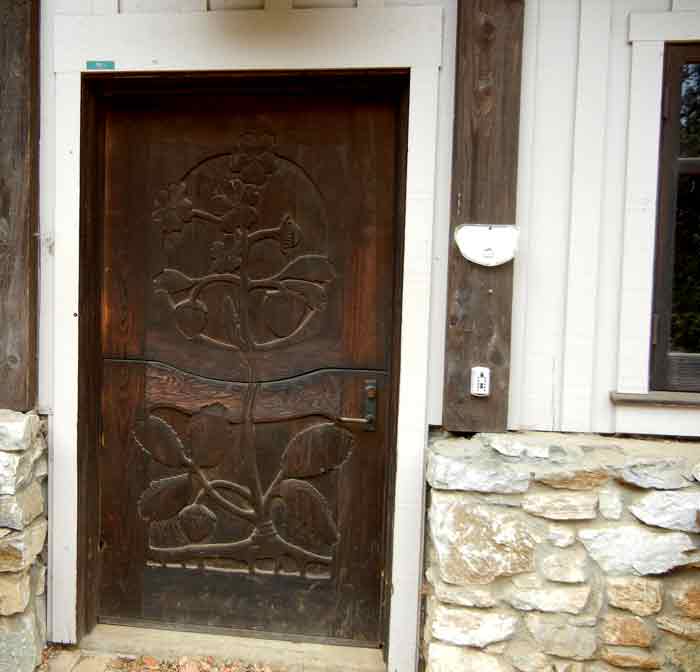
This is the main entrance door to the classroom building, erected on the site of Stephen Decater's original cookhouse on the farm when it was still being managed by Alan Chadwick.

Acres of corn . . . and then the sea! The agroecology verison of the "clairvoyer."
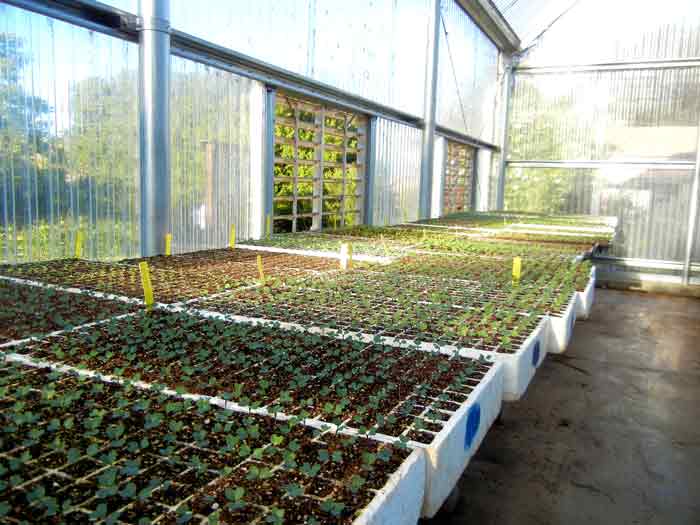
Propagation in a sterile medium in the greenhouse of the UCSC Agroecology Program farm.
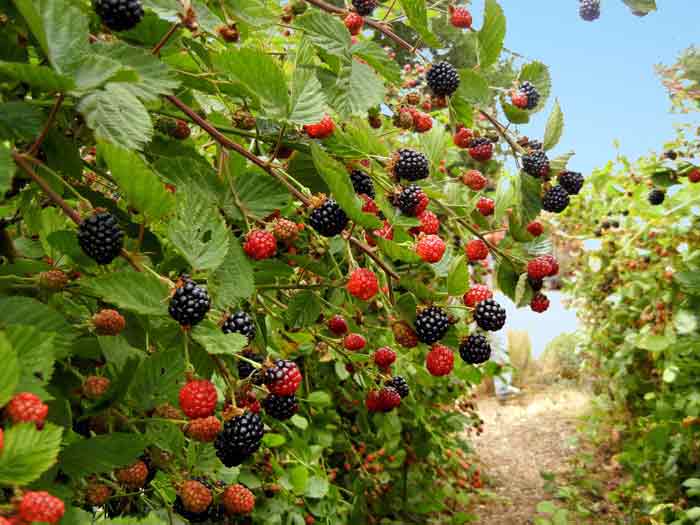
These are the best blackberries we have ever tasted. When we asked one of the apprentices what the variety was, she didn't know. The information was not posted on a white painted lath as Alan Chadwick always insisted be done at the old garden project, for the benefit of visitors and other apprentices. The rows of these blackberries are long and overgrown, so that it is fairly easy to lose oneself within the foliage and sample the fruit unobserved.
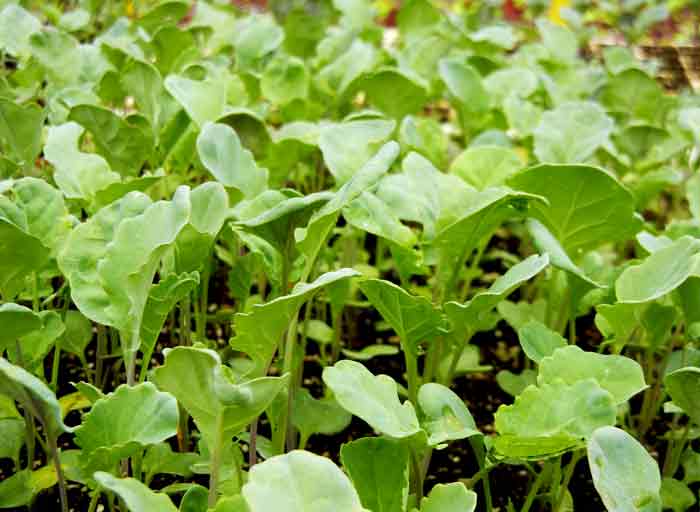
Young brassica seedlings awaiting transplant.
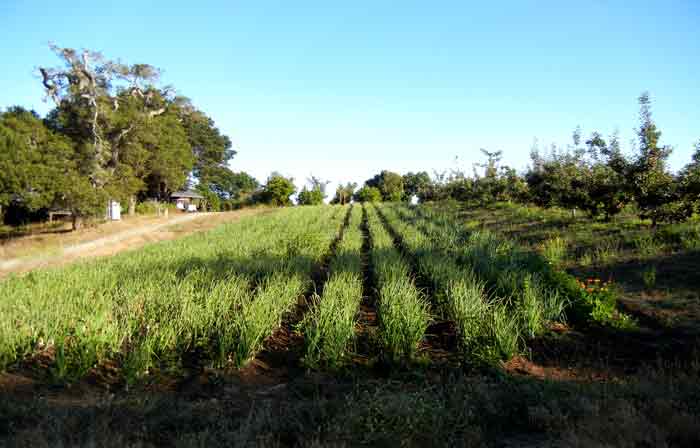
A crop of onions in a field at the UCSC Agroecology farm. Mildew was setting in, we were told, and so one of the staff was spraying the plants with hydrogen peroxide, "a harmless chemical," as he informed us.
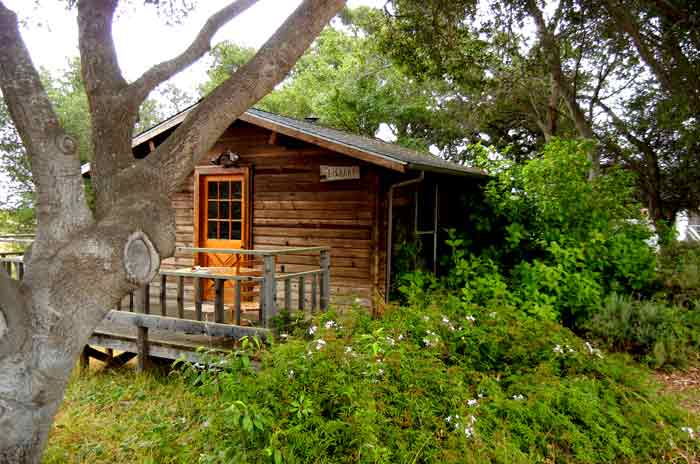
This little chalet-style building houses the apprentice library at the the UCSC Agroecology farm. A young lady inside informed us that it was off limits to visitors, so we did not linger to savor the tranquility and comfortable ambiance of the room.
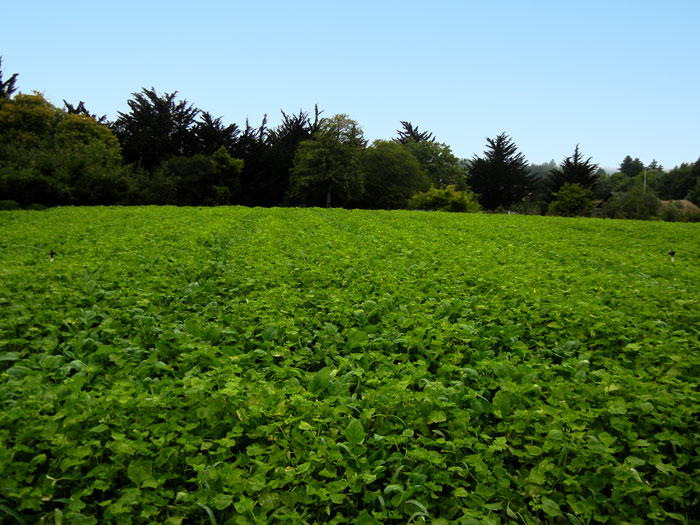

These shasta daisies add a bit of life to the farm.
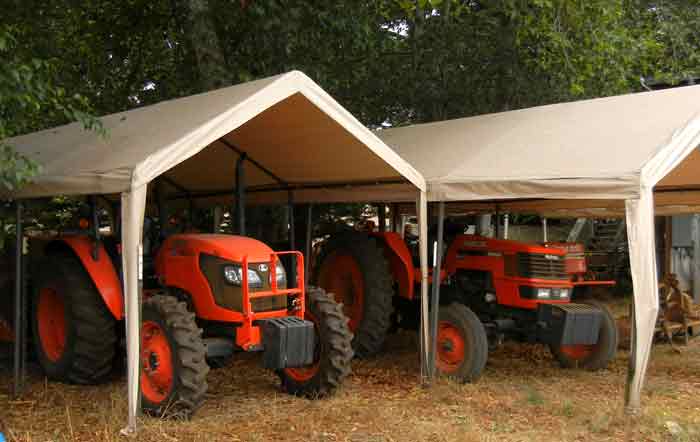
Cultivation is done not by hand, but rather by these tractors at UCSC.
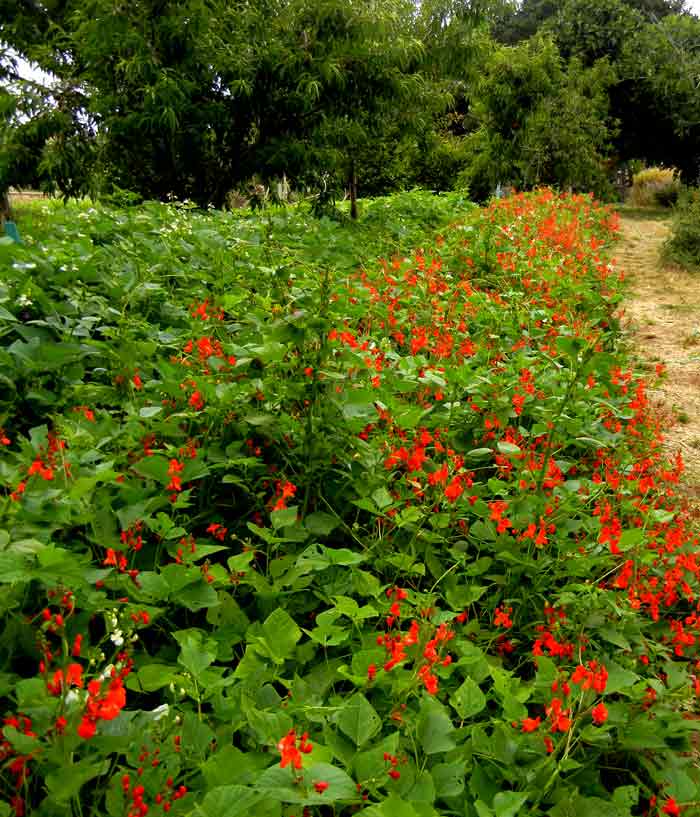
A bed of scarlet runner beans graces a path down at the apprentice farm of the Agroecology Program.
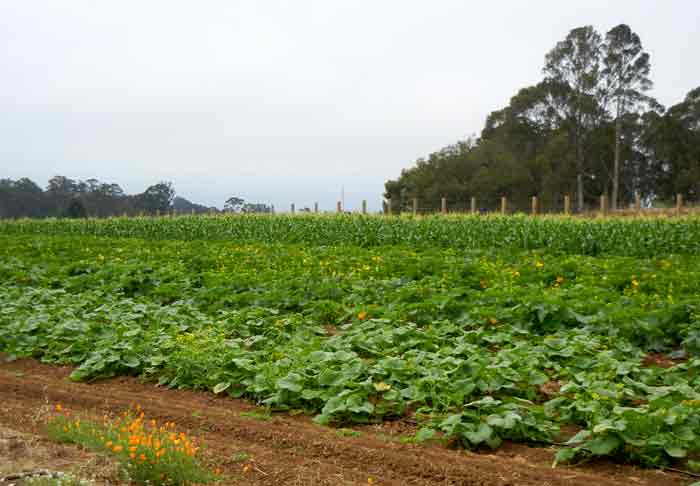
Corn and squash, two of the three sisters of Native American lore, co-exist near each other along side a tractor-road on the Agroecology farm. Raised beds are not much used at UCSC, nor is the intensive planting system, where interweaving leaves form a zone of thermal control, as Alan Chadwick taught.

Tomatoes are the main crop within this plastic greenhouse on the UCSC Agroecology farm.
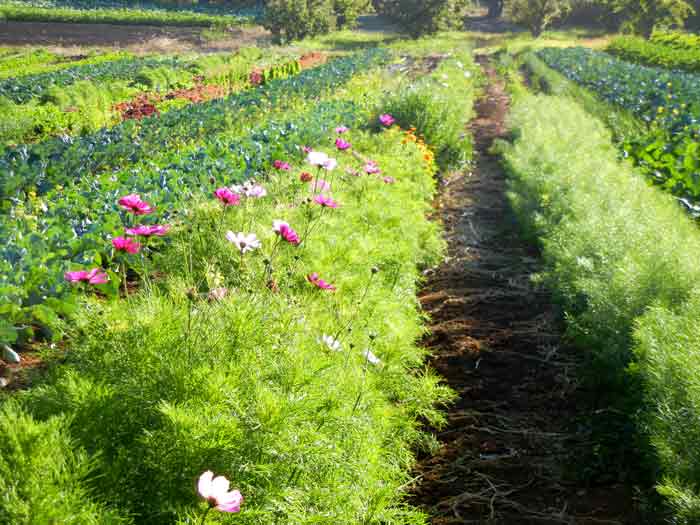
A lovely bit of color is provided by this bed of cosmos down on the farm project.
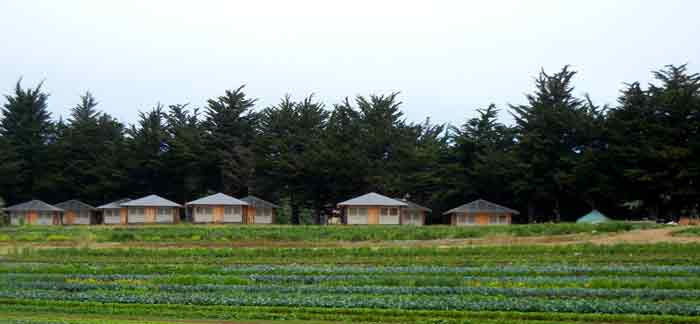
A cluster of tent cabins dominate the vast expanse of farm fields at UCSC. They look like a suburban housing tract in miniature, all alike on their own little lots. Perhaps some landscaping would help to soften the lines a bit. This is where the apprentices live who labor on the farm; definitely a step up from the primitive conditions faced by Chadwick's apprentices back in his time at UCSC. We mostly just threw our sleeping bags out in the redwood forest behind Merrill College and shivered in the damp, dank coastal fog. Every once in a while we would sneak into the dorms at Merrill or Cowell to take a furtive shower. Once, an apprentice came down with a raging fever, and having no other place to go, hitch-hiked downtown to the Bookshop Santa Cruz, where they had a large circular water bed set up for customers to relax while they looked over prospective purchases. He collapsed in delirium on the water bed until being thrown out at closing time. Fortunately, Louise, a UCSC student and frequent volunteer at the garden project, found him and took him home to her house to convalesce, or he probably would have died. She later became a Waldorf teacher back in Wisconsin or North Dakota or thereabouts. He ran into her some thirty years later at a teachers conference in Sacramento, and feelings of gratitude toward her welled up anew as he recalled her good deed so long ago. Should she happen to read these words -- as we have long since lost contact -- she is hereby requested to send an email.

A close-up of one of the apprentice tent cabins at the UCSC Agroecology Program farm. Each one is named for some now-famous (or infamous) apprentice. When I inquired how the names were chosen, they told me that the donor of the funds used to construct the units decided on who they were to be named after. Sorry, I can't remember any examples of the names as this is written, as that would be an amusing addition to the commentary here. Please, somebody, email me that information!

A peek through the window-screen into the interior of one of the four units that comprise each little tent cabin complex. Tidy and clean, unlike our primitive bowers in the woods back in the early 1970's. I remember being awakened several times at night by the sound of heavy breathing close to my face. A friendly skunk had become curious and probably would have licked or kissed me if I hadn't gingerly shoo'd him away, praying that he wouldn't spray in the meantime.
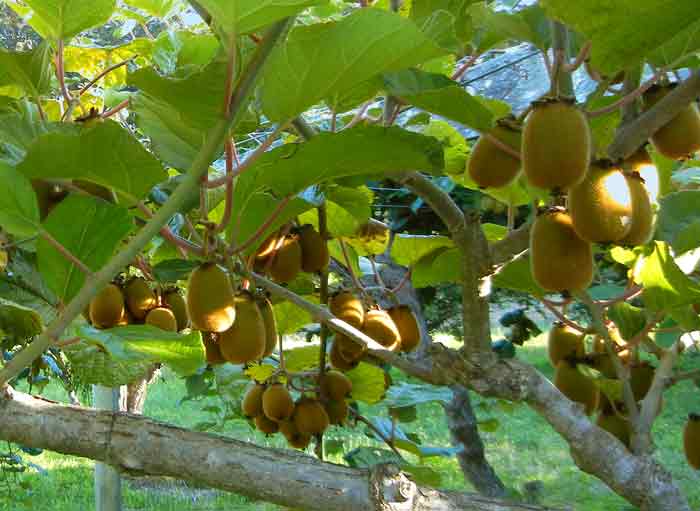
Kiwi fruit hangs in abundance from vines down on the Agroecology farm.
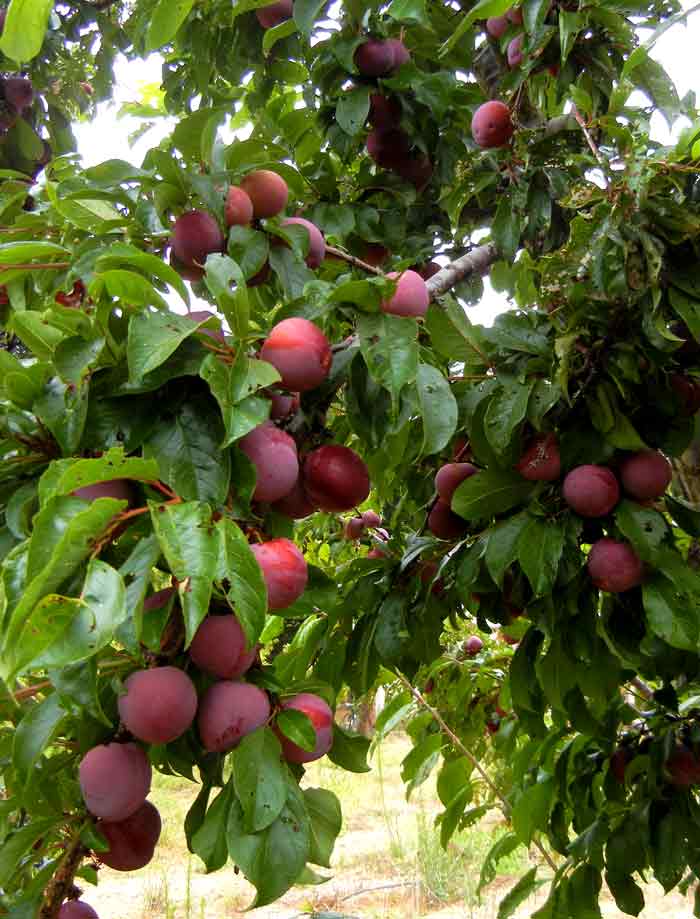
I confess that I sampled not a few of these delicious plums, which were just getting ripe at the time of our visit to UCSC.

These peaches were quite tasty, and I couldn't figure out why no one was eating them. I did my part, as I am no shirker to the job of eating fresh organic fruit ripe off the tree when no one is around to say don't do it.
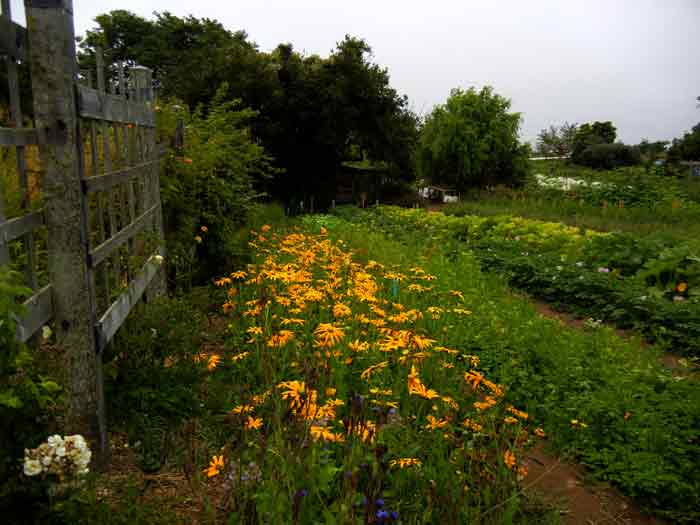
A lovely cluster of rudbeckia graces this little nook in the farm at UCSC, part of the Agroecology Program that teaches organic farming to apprentices. What is the tuition for the program? Please, somebody, fill us in on the details.
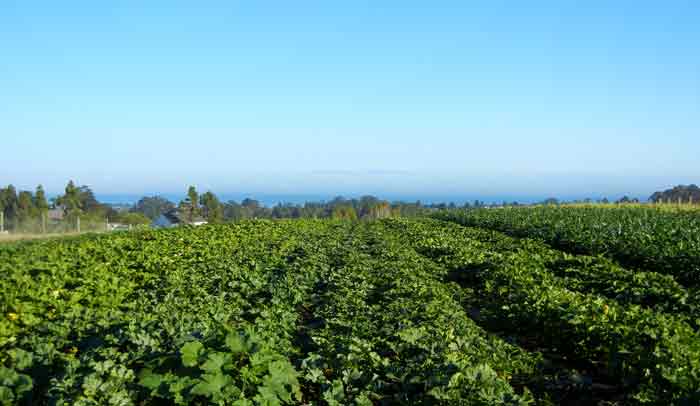
Zuccini to the sea. The UCSC campus is graced by numerous views that uplift the soul of the gardener as he labors in the fields.
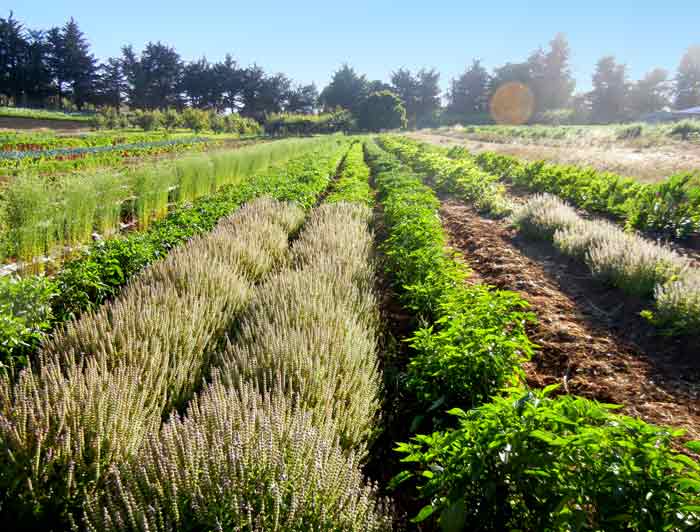
Herbs are sometimes interplanted with vegetables to promote the natural predators that keep harmful insect populations within bounds. This was a mainstay of the Chadwick method.

Marigolds amid the vegetables at the UC Santa Cruz Agroecology farm project.

A carved floral design on the bathroom door of Stephen Decater's replacement cookhouse. A nice touch. May the memory of Stephen and his teacher, Alan Chadwick, not perish from this earth.
All photos on this page taken in July, 2012, by Greg Haynes
